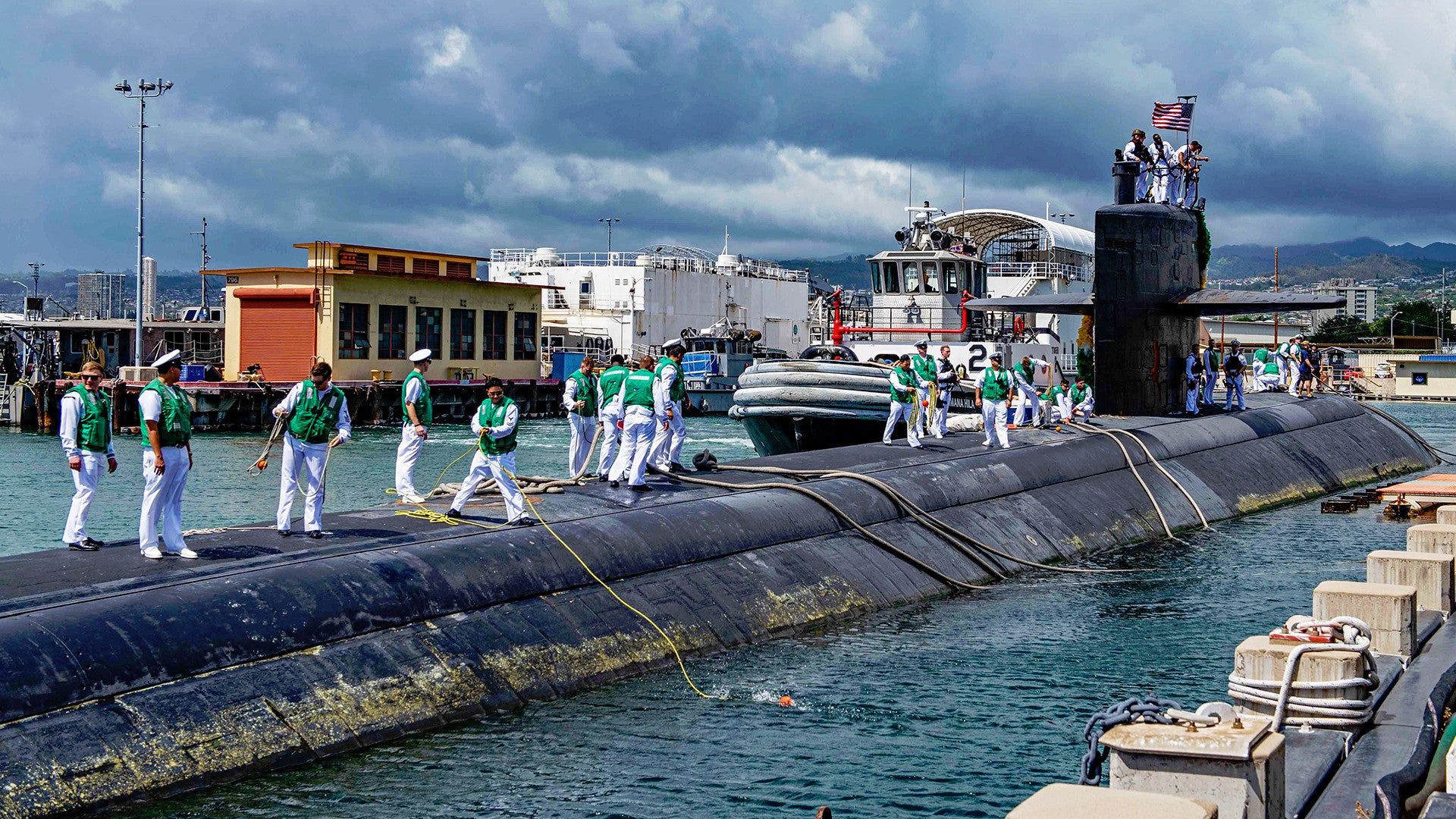The U.S. Navy’s oldest active attack submarine, the Los Angeles class USS Olympia, returned to her homeport in Pearl Harbor, Hawaii yesterday after an impressive seven-month-long world tour. The voyage, which saw the boat head east and circumnavigate the globe, was also her last. It’s certainly bittersweet, but it follows twilight years for the submarine that featured a number of significant events, including being responsible for firing the first submarine-launched Harpoon anti-ship missile in many years, and other public recognition of her nearly 35 years of service.
Family and friends were at Pearl Harbor to meet Olympia when she arrived on Sept. 8, 2019. The Navy announced earlier this year that it would decommission her by June 2020, but reports say that she will leave active service before the year ends. After that, the Los Angeles class attack submarine will head for the Puget Sound Naval Shipyard and Intermediate Maintenance Facility in Bremerton, Washington, where workers will remove her nuclear reactor plant for disposal and scrap the rest of her hull.
“Olympia has completed her final deployment after 35 years of service, circumnavigating the globe in seven months starting from Oahu, Hawaii, transiting through the Panama Canal, Strait of Gibraltar and Suez Canal,” U.S. Navy Commander Benjamin Selph, Olympia’s commanding officer, said in a statement. “Sailing around the world in our country’s oldest serving nuclear-powered Los Angeles class fast-attack submarine is a testament to the durability and design of the submarine, but also the tenacity and ‘fight on’ spirit of the crew.”
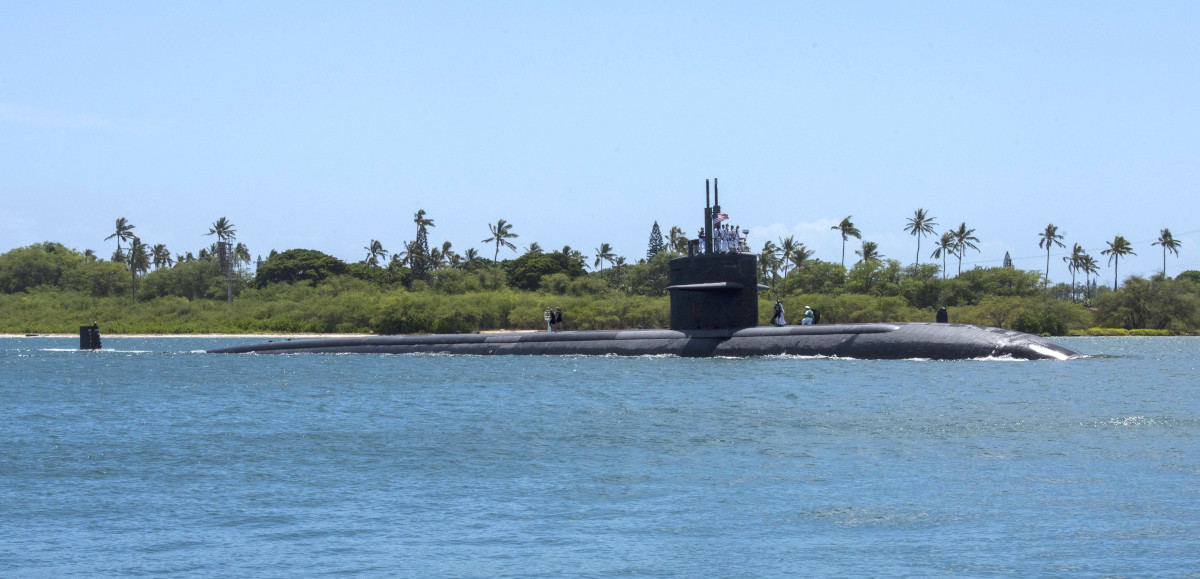
The submarine is actually just shy of 35 years in service, with the Navy having commissioned her on Nov. 17, 1984. She is also the last of the original batch of Flight I Los Angeles class boats still in service. The submarine that had previously held the title of the oldest active-duty boat, USS Bremerton, another Flight I Los Angeles class sub, went on the inactive rolls in July 2018. She is now at Puget Sound undergoing the decommissioning process.
Two other Flight Is, the USS La Jolla and USS San Franciso, remain technically commissioned, but serve only as inactive Moored Training Ships. Still, after Olympia goes off to Puget Sound, there will still be eight Flight II Los Angeles class subs and 22 Flight IIIs, also known as the 688is or “improved” types, in active service.
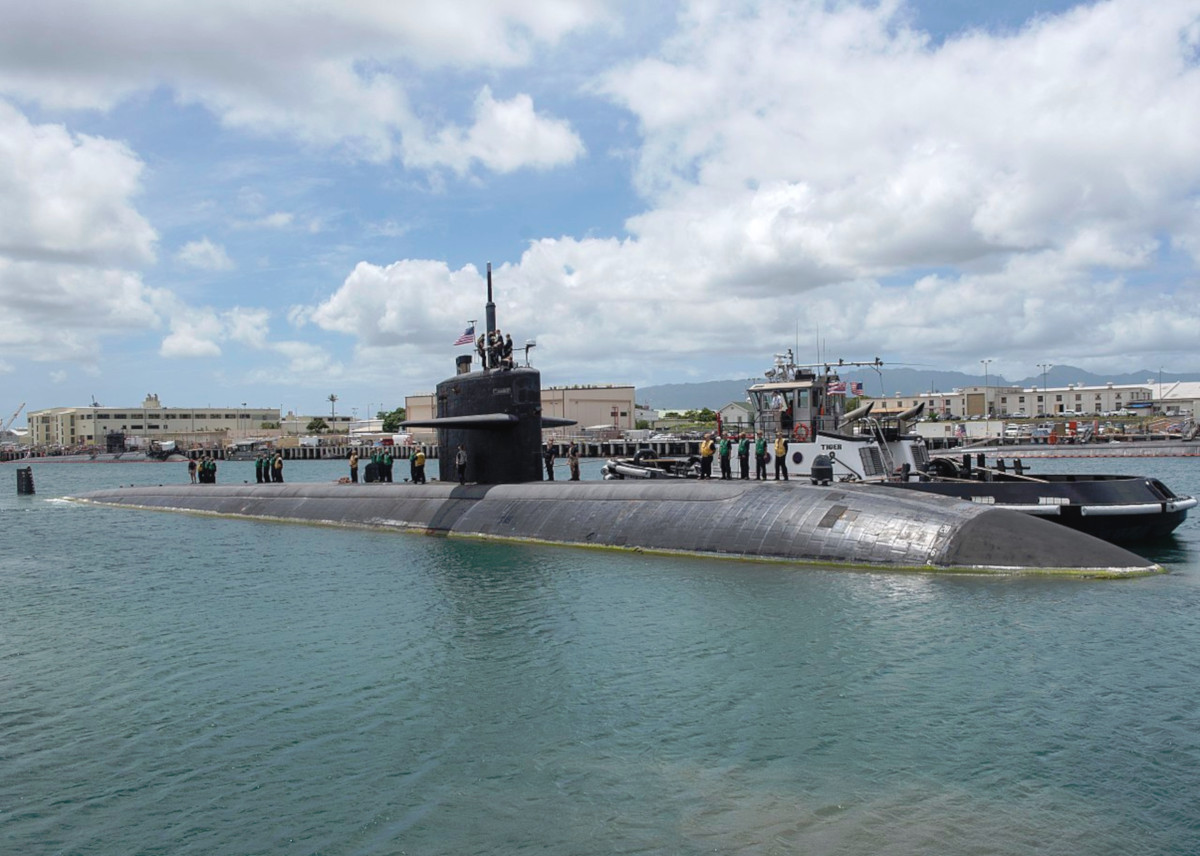
“We have [sic] been training towards this deployment for months, and it was great to see the sailors put their skills and knowledge to the test,” U.S. Navy Master Chief Electronics Technician (Radio) Arturo Placencia, Olympia‘s chief-of-the-boat, said. “Our motto is ‘We do difficult things with excellence, strength, and honor,’ and that’s exactly what our sailors did.”
As a member of the “silent service,” it’s perhaps not surprising that the Navy has offered limited details on what Olympia actually did do during her worldwide cruise. The boat’s official stated mission was “conducting operations to support national security,” according to the official news release.
We know the submarine headed into the Eastern Pacific Ocean from Pearl Harbor after she left in February. From there, she sailed through the Panama Canal and into the Atlantic Ocean. After a visit to Faslane, Scotland, it was through the Strait of Gibraltar and into the Mediterranean Sea, before passing through the Suez Canal and into the Red Sea. Back in 1998, Olympia, which has been homeported in Hawaii since it entered service, had already earned the distinction of being the first Pacific-based U.S. Navy submarine to transit the Suez since 1963.
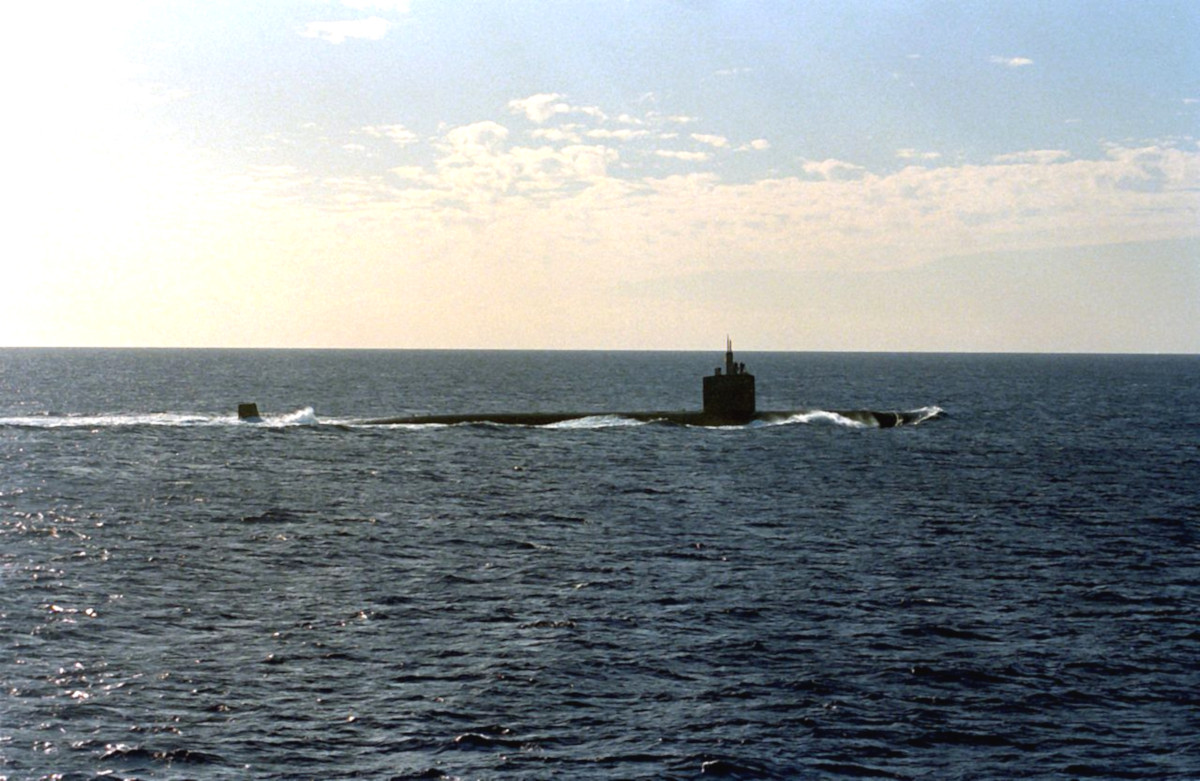
Olympia had spent at least two months cruising around the Mediterranean Sea. In May 2019, she made a scheduled port visit to the U.K. Royal Navy’s base in Gibraltar in the Western Mediterranean. During her visit, personnel erected scaffolding around her sail to conduct apparent work on the submarine’s Universal Modular Mast (UMM), an electronic periscope or “photonics mast.” It’s not clear whether the work was the result of damage sustained earlier in the submarine’s travels or something breaking down during an earlier portion of its voyage. It is also possible that the Navy installed some additional mission equipment during the stopover.
The “Los Angeles-class submarine USS Olympia (SSN 717) arrived and left as scheduled for their port visit in Spain,” was all U.S. Navy Commander Kyle Raines, a spokesperson for Commander, 6th Fleet, which oversees the service’s activities in the region, could say when The War Zone reached out in June. “The submarine is on routine deployment conducting maritime operations with allies and partners in the U.S. 6th Fleet area of operations.”
“The crew of Olympia welcomed British Parliament members on a tour … during our visit,” Commander Selph said of the port call after returning to Pearl Harbor. “We joined the crew of [the Royal Navy’s Trafalgar-class attack submarine] HMS Talent (S92) in a day of barbeque and friendly sports competitions of soccer, football, and volleyball. There was also a promotion ceremony for two Olympia Sailors and a dolphin presentation onboard Talent.”
It’s worth noting that Talent also appeared in Gibraltar in May sporting what appeared to be a wake detection system. You can read the War Zone‘s past analysis of what this piece of equipment might be capable of and why the Royal Navy may have been experimenting with it here.
Then, in July, Olympia made another scheduled port call at Naval Support Activity Souda Bay in Greece in the Eastern Mediterranean, where official pictures show she took on Mk 48 torpedoes. Again, however, personnel set up scaffolding around the sail, though it’s not clear what work they may have performed in this case. If workers had installed mission-related equipment in Gibraltar, they may have removed it in Souda Bay if it was no longer necessary.
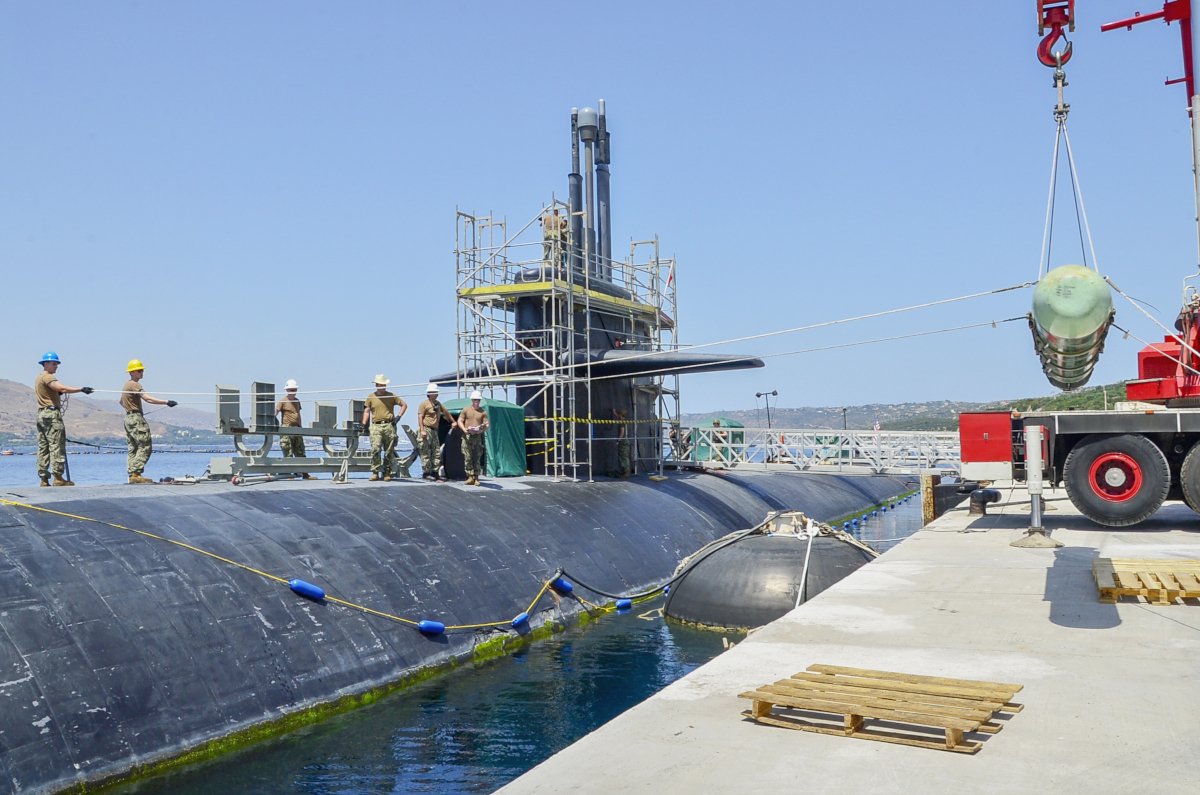
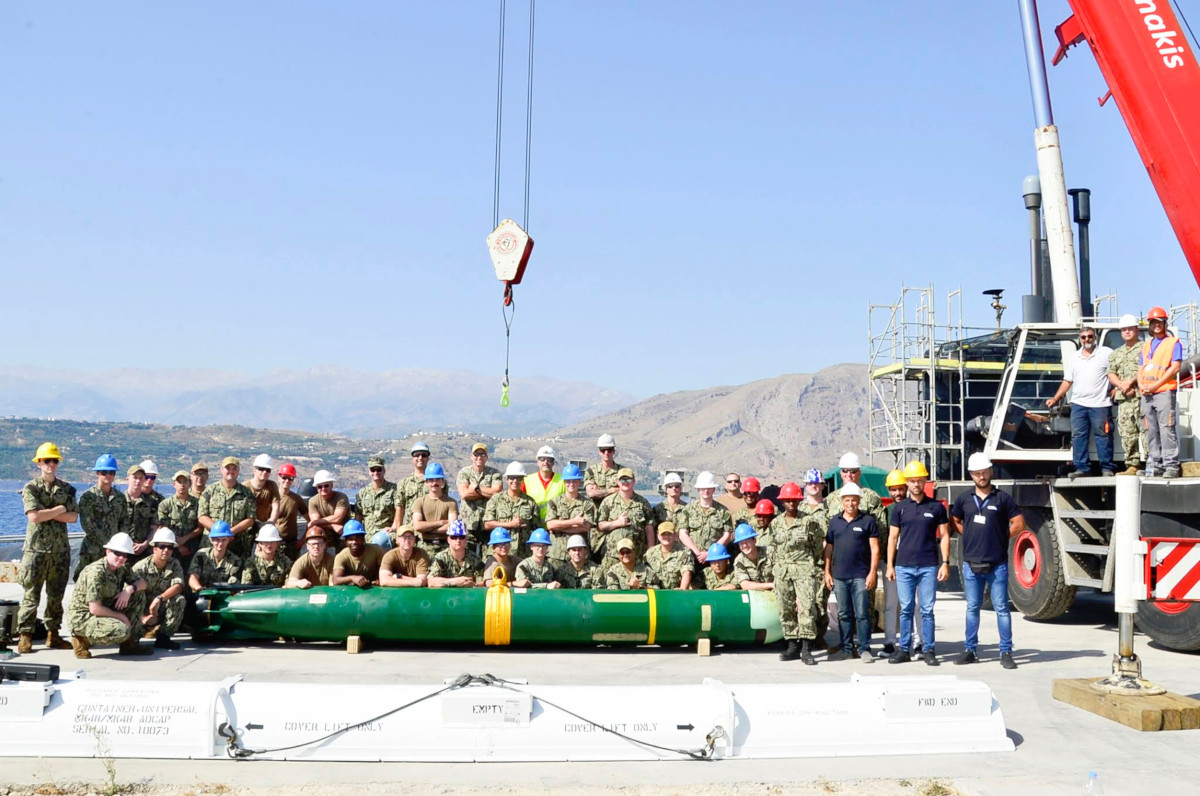
After conducting operations in the Mediterranean, Olympia moved into the Red Sea via the Suez and into the Indian Ocean, before eventually making her way back home to Pearl Harbor via the Western Pacific.
No matter what Olympia might have been doing during her final cruise around the world, it was certainly a worthy sendoff for a submarine that has given more than three decades of service to the U.S. Navy. Right up until the end, the boat has been very active and visible.
In July 2018, the submarine became the first to fire a UGM-84D Harpoon submarine-launched anti-ship missile in more than 20 years at the biennial Rim of the Pacific (RIMPAC) exercise off Hawaii. The missile successfully hit the decommissioned tank landing ship ex-USS Racine during a live-fire sinking exercise, or SINKEX. The Navy is now looking to restore this capability, which you can read more about in this previous War Zone piece, to the Los Angeles class as an interim anti-ship weapon until the service can integrate the new Maritime Strike Tomahawk cruise missiles onto the remaining boats.

The next month, Olympia went viral online when the Navy posted some amazing above-and-below water shots of the submarine’s crew during a swim call off in the waters of Hawaii. The submarine’s crew is probably looking forward to some rest and relaxation again now ahead of preparing for the boat’s retirement from active service.
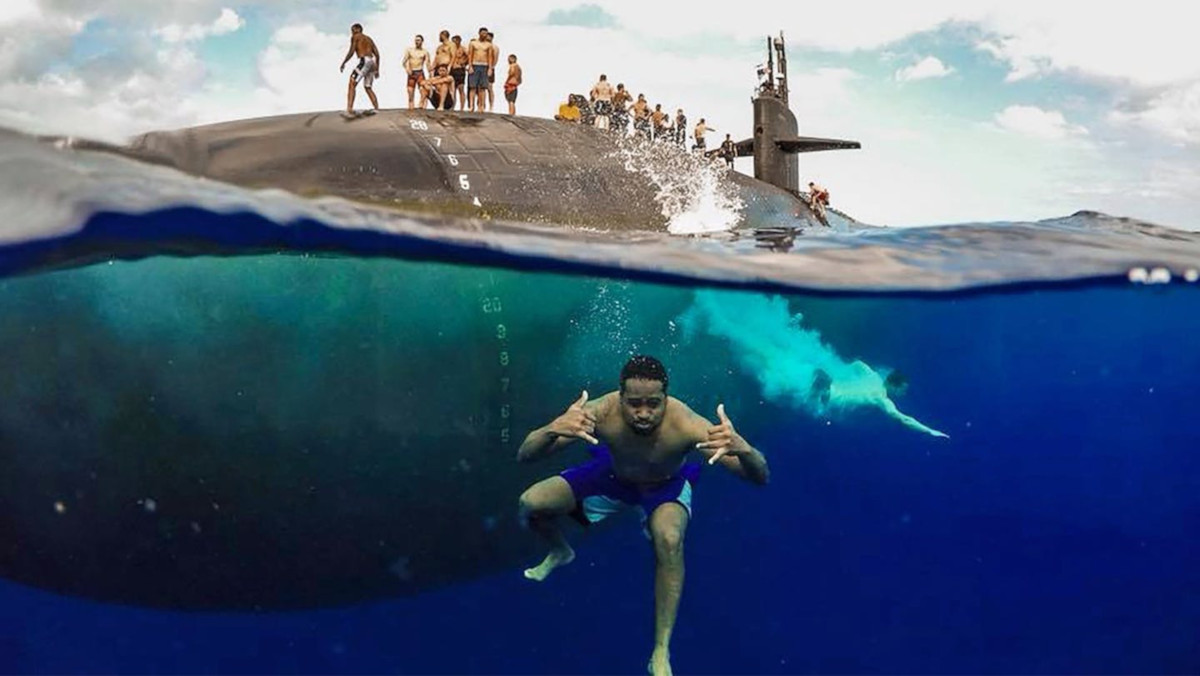
For this particular submarine, those preparations will also include a piece of storied naval tradition that is now 76 years old. In 1943, then-U.S. Navy Commander Richard O’Kane, executive officer of the Gato class submarine USS Wahoo was playing cribbage with other officers and received the highest-scoring hand possible. That same night, the submarine sank two Japanese freighters, and O’Kane’s cribbage board became a symbol of good luck.
O’Kane brought the board with him when he took command of the Balao class submarine USS Tang. He retired from the Navy as Rear Admiral in 1957, but the keepsake has since gone on to be a good luck charm for the crew of the longest-serving attack submarine assigned to the U.S. Navy’s Pacific Fleet.

The USS Kamehameha, a Benjamin Franklin-class ballistic missile that the Navy had converted to an attack submarine between 1992 and 1993 and then used as a special operations mothership for SEAL teams, carried the board until its decommissioning in 2002. It then passed to the spy submarine USS Parche, a heavily modified Sturgeon-class attack submarine, which remains the most highly decorated Navy vessel of any kind, ever.
The first-in-class USS Los Angeles and then the USS Bremerton had the board until it most recently made its way to Olympia last year.

If the tradition continues, and there’s no reason to assume it won’t, Olympia‘s crew will now pass the board to the USS Chicago, a fight II Los Angeles class boat, which was commissioned in 1986. USS Providence, the first Flight II, which the Navy commissioned in 1985 and is set to become the oldest attack submarine on active duty, is assigned to the U.S. Navy’s Atlantic Fleet.
So, while Olympia‘s storied service to the Navy may be coming to an end soon, it will live in on in a way with that piece of naval history, which will continue to offer good luck to another group of submariners of the “silent service” and the old, but proud submarine they serve on.
Correction: The original version of this story said that Olympia had circumnavigated the globe by sailing west to east, when it had actually sailed east to east.
Contact the author: joe@thedrive.com
